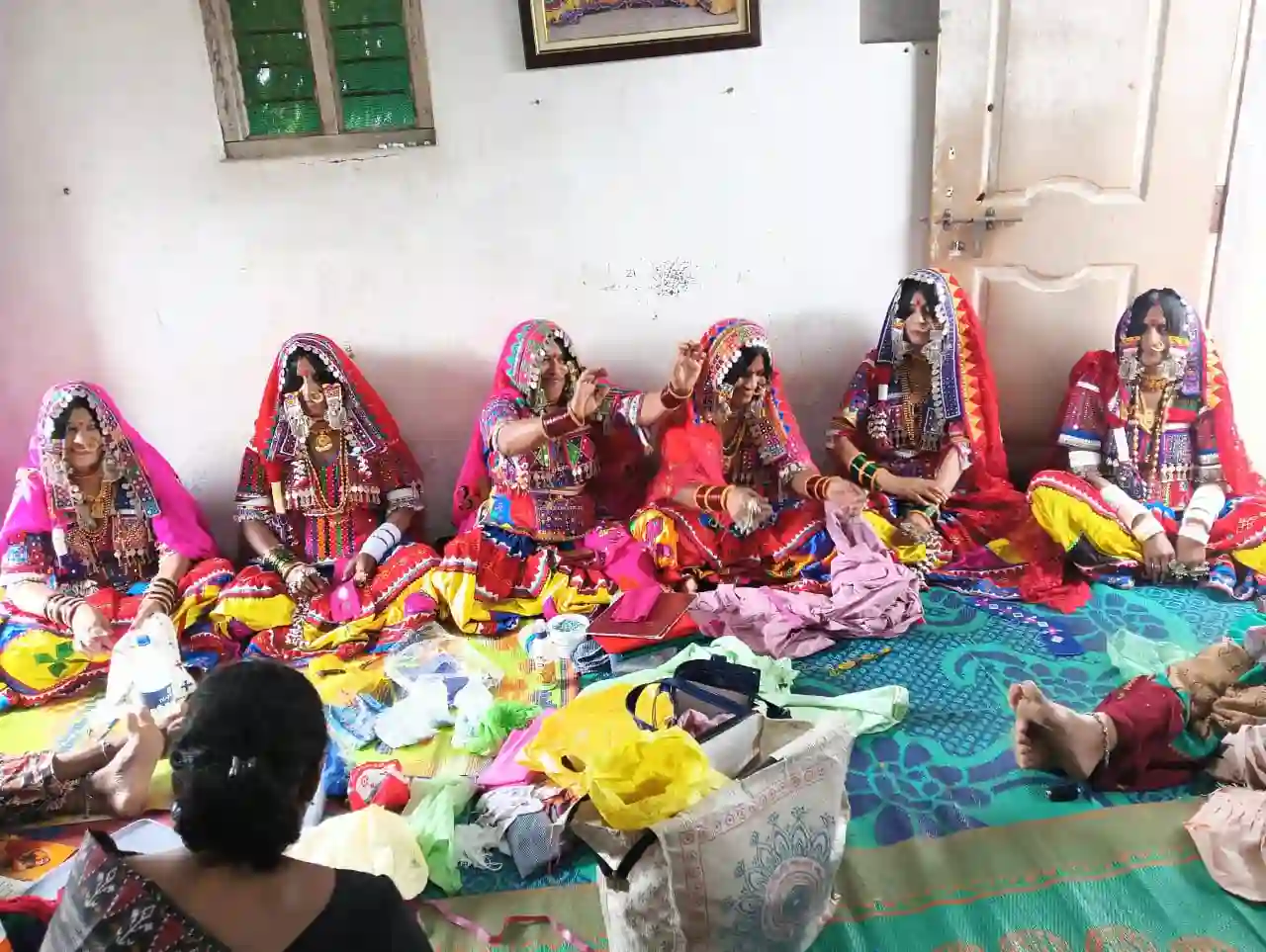Gifted and trained to make exquisite designs on fabrics for making all kinds of dresses, the nomadic Lambani community are getting a fillip in keeping this age-old art alive. An all-women non-governmental organisation, Banjara Kasuti, is working with 60 women, helping them to earn better through their skill of weaving enchanting patterns.
The lives of these Lambani women belonging to Vijayapura region in Karnataka’s Bijapur district have changed as they now earn a steady income and hope for a better future for themselves, their children and traditional art.
Talking to India Narrative, Asha Patil Founder of Banjara Kasuti said: “We found that this legacy art which the Lambanis had been preserving and carrying forward for generations was slowly dying. The younger generation was not fully trained and fineness and finesse were missing from their work. They would do a quick job without going into the aesthetics. We talked to them and ensured that the older members of this Scheduled Tribe passes their skills sets to younger women and girls.”
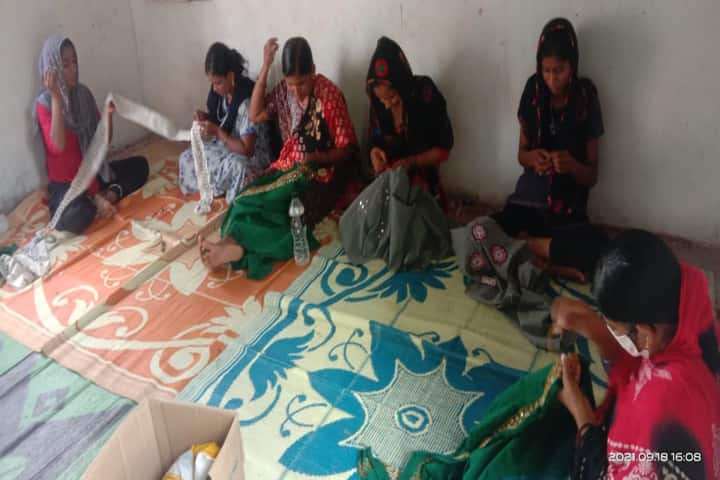
To motivate both the teachers and learners, the NGO paid them daily wages. Sharing details with India Narrative, Seema Kishore, its Managing Partner informed: “For the first 7 to 10 days, they are paid Rs.100, so that they are interested in learning. Depending on how quickly she learns, the person is then paid Rs.150 and once they become full-fledged workers, they start getting Rs.250 per day.”
Following the training, the NGO provides the women fabric, threads and needles to embroider. The NGO doesn’t in any way interfere with their original skills and art. “We fine tune and refine their skills. In 2017 we had a group work with a designer for 10 days and they were taught about sketches and tracing. This group then passed on their learning to others on their return to Vijayapura. Every Lambini group has their own distinct style and we want to preserve that. We just tell them about the exact size required, making replicas, use of pastels, better fabric and threads, original shells and good quality mirrors. This ensures better quality product which does not bleed and appeals to buyers,” Patil explained to India Narrative.
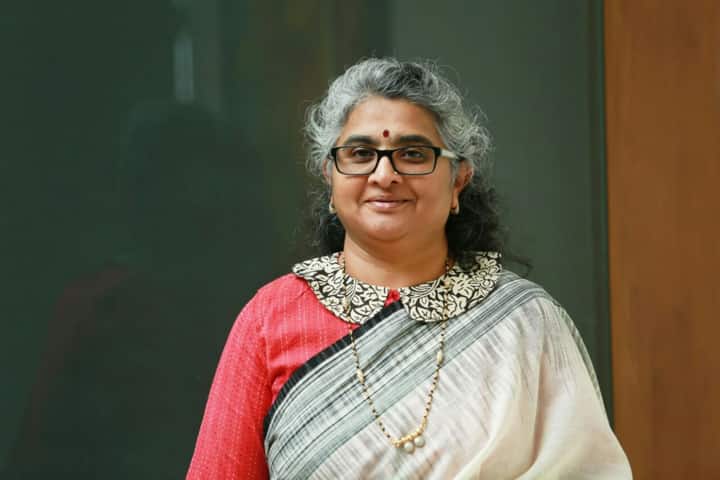
Giving an example to elaborate this, Patil said: “They are told where a motif or a design has to be placed in a kurta or a jacket or sari or dupatta and what would be the colour combination. We limit ourselves to just providing an outline and nothing more. Besides, we supervise to ensure that the work comes out neat.”
Lambanis hail from Central Asia and moving through Afghanistan and Kashmir, they are now found in Rajasthan, Gujarat and Karnataka. Their embroidery which is well-known is a blend between mirror work, cross-stitching, pattern darning, overlaid stitching, beadwork, quilting stitches, and appliqué patchwork. Apart from colourful threads and mirrors, they use decorative beads, small cowry shells and coins to embellish the cloth.
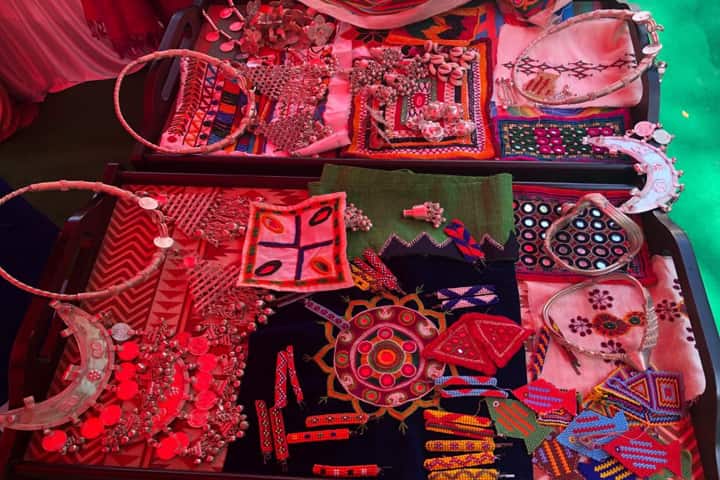
They use a total of 14 types of stitches, namely, Kilan, Vele, Bakkya, Maki, Suryakanti Maki, Kans, Tera Dora, Kaudi, Relo, Gadri, Bhuriya, Pote, Jollya and Nakra. These varied stitches follow a geometric pattern like squares, circles, triangles, rectangles, diagonal and parallel lines and provide the fabric an array of colours and designs.
Once the product is ready, the NGO provides finishing, pressing and packaging and also tailoring if need be. “These we sell in different exhibitions which are held in Bengaluru and Mangaluru. We have also tied-up with Dastkar, the NGO and our products are sold in their exhibitions which are held throughout the year,” Kishore told IN.
Sharing the response of the customers to the work of Lambinis, Patil said: “It is very good. Buyers appreciate the work and they come back to purchase more while providing word of mouth publicity. Our designs stand out as they are unique. There is no replication of designs. Every year and season all our works are different.”
The profits made by the NGO are shared with the Lambini women. Elaborating on this for IN, Patil said: “To provide them a cushion, their earnings through profits is put in a bank as fixed deposit for two years. This way we have introduced them to banking and helped them open accounts to inculcate the habit of saving.”
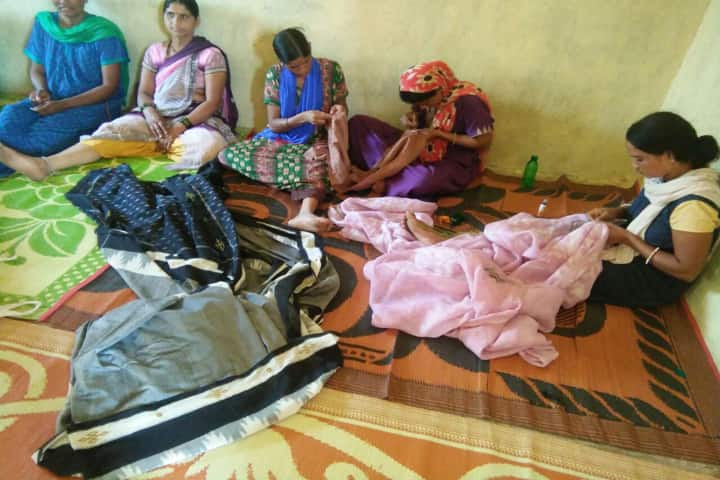
While familiarity with banking will go a long way to make Lambini women a part of the mainstream, the NGO also helps them to avail of healthcare facilities and education. “The women and their families are referred to hospitals where they pay nominal charges or at times get free medical service. Besides this, children are encouraged to go to college and for higher education and for this Banjara Kasuti meets the head of the institution to get admission and scholarships or waiver of fees,” Kishore said.
Incidentally, the Lambani embroidery was in the news last month. An exhibition on Lambani embroidery patches titled “‘Threads of Unity”, celebrating its aesthetic expressions and design vocabulary created a Guinness World Record for the “largest display of Lambani items” with a total of 1755 items.
More than 450 Lambani women artisans associated with Sandur Kushala Kala Kendra Kendra, Karnataka came together to create these items using GI-tagged Sandur Lambani embroidery.
Scripting history in Hampi!
It is a matter of great joy that during the 3rd @g20org Culture Working Group Meeting, a new record has been set!
A #GuinnessWorldRecord has been created for the ‘largest display of Lambani items’ with a total of 1755 items.@narendramodi pic.twitter.com/6dWcw8lMkv
— Ministry of Culture (@MinOfCultureGoI) July 10, 2023






